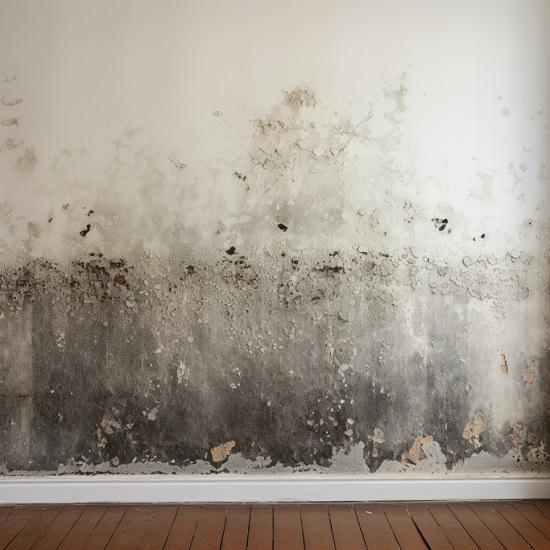Professional Tips for Blog Post Mold And Mildew Remediation Success
In the world of mold and mildew remediation, effectively eliminating mold and mildew is just half the fight; the true challenge lies in preventing its reappearance. By sticking to expert tips and best practices, people can protect their spaces versus mold and mildew renewal and preserve a healthy interior atmosphere.
Monitor Moisture Levels Frequently
Routine monitoring of moisture degrees is vital in guaranteeing the effectiveness of message mold and mildew remediation initiatives. After completing mold and mildew remediation treatments, preserving optimal moisture levels is critical to protect against mold re-growth and guarantee a healthy and balanced interior environment. Surveillance moisture levels permits for early discovery of any kind of spikes or fluctuations that could potentially cause mold renewal. High humidity degrees over 60% produce a helpful atmosphere for mold and mildew to flourish, making regular monitoring a positive measure to prevent any type of future mold and mildew issues - testing air quality after mold remediation.
Additionally, developing a regular schedule for humidity checks, especially in risky locations such as kitchens, shower rooms, and basements, is a positive approach to mold and mildew prevention. By constantly monitoring moisture degrees, home owners can successfully alleviate the danger of mold reoccurrence and preserve a healthy and balanced indoor setting post-remediation.
Conduct Thorough Inspections Post-Remediation
Adhering to the completion of mold removal treatments, it is essential to perform comprehensive examinations to verify the performance of the remediation process. These post-remediation inspections are vital in ensuring that the mold concern has been effectively addressed and that there is no reappearance or remaining mold growth. Assessments should be brought out by certified specialists who have expertise in identifying mold and examining interior air top quality.
During these inspections, different approaches such as aesthetic analyses, air tasting, and surface sampling may be utilized to thoroughly assess the remediated areas. Visual assessments include an in-depth assessment of the properties to look for any visible signs of mold development or water damages. Air tasting assists in identifying the air-borne mold spore levels, while surface sampling can discover mold bits on surfaces.
Implement Appropriate Ventilation Methods
After making certain the performance of the mold and mildew removal process via detailed evaluations, the following vital action is to concentrate on implementing appropriate air flow techniques. Adequate ventilation is crucial in avoiding mold and mildew reoccurrence by managing dampness degrees and promoting air flow.
Proper ventilation not just help in stopping mold and mildew growth however additionally adds to the general wellness and convenience of residents. By making certain adequate ventilation throughout the property, you can minimize the threat of mold and mildew regrowth and create a healthier living setting. Normal upkeep of air flow systems, including cleansing and filter substitutes, is crucial to sustaining efficient air flow. Consulting with cooling and heating professionals can supply more understandings right into maximizing ventilation methods visit their website for your specific home needs.

Usage Mold-Resistant Materials for Repairs
To boost the long-lasting effectiveness of mold and mildew removal efforts, including mold-resistant products for repair services is essential in mitigating the threat of future mold growth. Mold-resistant products are created to stand up to moisture and hinder mold growth, making them a vital option for areas susceptible to dampness and moisture. When fixing areas influenced by mold, utilizing materials such as mold-resistant drywall, mold-resistant paints, and mold-resistant caulking can assist prevent mold reappearance.
Mold-resistant drywall is an exceptional choice to conventional drywall in locations like basements and shower rooms where dampness levels are greater. This sort of drywall has an unique coating that stands up to mold and mildew growth even when subjected to damp conditions. Additionally, using mold-resistant paints including antimicrobial representatives can additionally hinder mold and mildew advancement on ceilings and wall surfaces.
In locations where wetness prevails, such as cooking areas and washrooms, making use of mold-resistant caulking around bathtubs, sinks, and home windows can help seal out water and prevent mold and mildew from holding in fractures and crevices. By buying these mold-resistant products throughout repair work post-remediation, you can considerably decrease the probability of future mold issues and keep visit this site right here a healthier indoor setting.
Maintain Tidiness and Address Water Issues
After mold and mildew remediation, it is important to keep a tidy environment to avoid the regrowth of mold. Leaks, water intrusion, or high humidity degrees can develop the excellent breeding ground for mold, so it is vital to deal with any water-related troubles quickly.
To maintain tidiness, take into consideration using HEPA filters in vacuums and air purifiers to trap mold spores and avoid their flow in the air. Furthermore, making sure correct air flow in areas prone to moisture buildup, such as cooking areas and restrooms, can help keep humidity levels in check. By staying alert regarding tidiness and dealing with water problems quickly, you can efficiently avoid mold reinfestation and maintain a healthy interior atmosphere.
Conclusion

In the world of mold removal, successfully removing mold is only half the fight; the real challenge lies in stopping its reappearance. After finishing mold remediation procedures, maintaining optimal humidity levels is vital to protect against mold and mildew re-growth and ensure a healthy indoor atmosphere. High moisture degrees over 60% develop a helpful environment for mold to thrive, making regular monitoring a positive step to protect against any kind of future mold problems.
To improve the long-lasting effectiveness of mold and mildew remediation initiatives, including mold-resistant products for repair services is vital in minimizing the threat of future mold and mildew growth. After mold and mildew removal, it is crucial to keep a tidy atmosphere to stop the regrowth of mold and mildew.